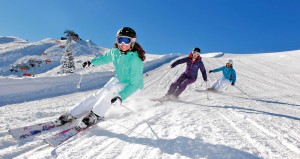A retired surgeon, Terry McEnany, MD, spends his winters in Colorado. Dr. Terry McEnany has been teaching people how to ski for nearly two decades.
These following tips can make your first time on the slopes more enjoyable as a beginner skier.
– Steer clear of powder.
Perfecting technique is important when first learning how to ski. Areas laden with powder create unnecessary challenges during the learning process, and you will likely spend much time getting stuck, rather than practicing. Allow yourself to keep full attention on the basics by selecting groomed terrains to practice on to ensure surface consistency.
Try to use “detachable” chair lifts
These operate on two different- speed cables. One cable carries the lift chairs quickly up the hill,, while the other slows the chair down at the loading zone. The latter is critical for beginners because it gives you more time to situate yourself on a seat when loading and to comfortably exit the chair at the top of the lift. View a resort map to locate this type of lift.
– Look straight ahead.
A common mistake new skiers make is looking at their skis while in motion. Avoid this and keep your sightline at least 10 feet ahead of your skis. Identify obstacles, such as a group of people or a change in the surface, quickly consider how to prevent a collision or fall, and execute your plan.







